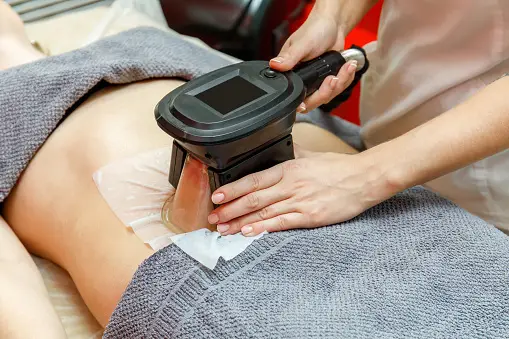
When faced with chronic pain or discomfort, the prospect of surgery may seem daunting. Fortunately, advancements in medical technology and treatment options have expanded the range of nonsurgical alternatives that are highly effective in alleviating pain. This blog explores various nonsurgical treatments available today, their benefits, and why they may be the right choice for managing your pain.
Understanding Nonsurgical Treatments
Nonsurgical treatments encompass a wide array of therapeutic approaches designed to reduce pain and improve function without the need for invasive procedures. These treatments are often recommended as initial or ongoing management strategies for various musculoskeletal and chronic pain conditions.
Common Nonsurgical Treatment Options
- Physical Therapy: Physical therapy programs are tailored to each individual’s needs and may include exercises, stretches, manual therapy, and modalities such as ultrasound or electrical stimulation. Physical therapists work to improve strength, flexibility, and mobility while reducing pain.
- Injection Therapies: Several types of injections can provide targeted pain relief by delivering medications directly to the affected area. Examples include corticosteroid injections for inflammation, hyaluronic acid injections for joint lubrication, and nerve blocks for pain modulation.
- Platelet-Rich Plasma (PRP) Therapy: PRP therapy involves using a concentrated solution of a patient’s own blood plasma, enriched with platelets, to promote healing and reduce inflammation in injured tissues. It’s commonly used for conditions like tendonitis and osteoarthritis.
- Acupuncture: A traditional Chinese medicine technique that involves inserting thin needles into specific points on the body to stimulate energy flow (Qi) and promote pain relief, relaxation, and overall well-being.
- Chiropractic Care: Chiropractic adjustments and manipulations focus on correcting alignment issues in the spine and joints to alleviate pain, improve mobility, and enhance nerve function.
- Regenerative Medicine: Techniques such as stem cell therapy and prolotherapy aim to stimulate the body’s natural healing processes to repair damaged tissues and reduce pain.
- Pain Management Techniques: Cognitive-behavioral therapy, relaxation techniques, and mindfulness practices can complement physical treatments to help manage chronic pain conditions.
Benefits of Nonsurgical Treatments
- Minimally Invasive: Nonsurgical treatments typically involve minimal or no incisions, reducing the risks associated with surgical procedures such as infection and recovery time.
- Pain Relief: Many nonsurgical options provide effective pain relief, allowing individuals to manage symptoms and improve their quality of life without undergoing surgery.
- Improved Function: By addressing underlying causes of pain and promoting healing, nonsurgical treatments can restore mobility, flexibility, and overall function.
- Personalized Care: Treatment plans are customized to meet each patient’s unique needs, considering factors such as the type and severity of pain, overall health, and treatment goals.
Conditions Treated with Nonsurgical Approaches
Nonsurgical treatments are suitable for a wide range of conditions, including:
- Back Pain and Neck Pain: Disc herniation, spinal stenosis, muscle strains, and other spinal disorders.
- Joint Pain: Osteoarthritis, rheumatoid arthritis, and tendonitis affecting the knees, hips, shoulders, and other joints.
- Soft Tissue Injuries: Tendon and ligament injuries, rotator cuff tears, and sports-related injuries.
- Chronic Pain Syndromes: Fibromyalgia, complex regional pain syndrome (CRPS), and neuropathic pain conditions.
Conclusion
Choosing nonsurgical treatments for pain management offers a range of effective options that prioritize your well-being and quality of life. Whether you’re dealing with chronic pain from a musculoskeletal condition, recovering from an injury, or seeking relief from arthritis-related discomfort, exploring nonsurgical alternatives can provide significant benefits.
Consulting with a healthcare provider or pain management specialist is the first step towards understanding which nonsurgical treatments may be most suitable for your specific condition and goals. By taking a proactive approach to pain management, you can find relief and regain control over your health.
Explore the possibilities of nonsurgical treatments and discover effective solutions for managing your pain—because your comfort and well-being matter.

